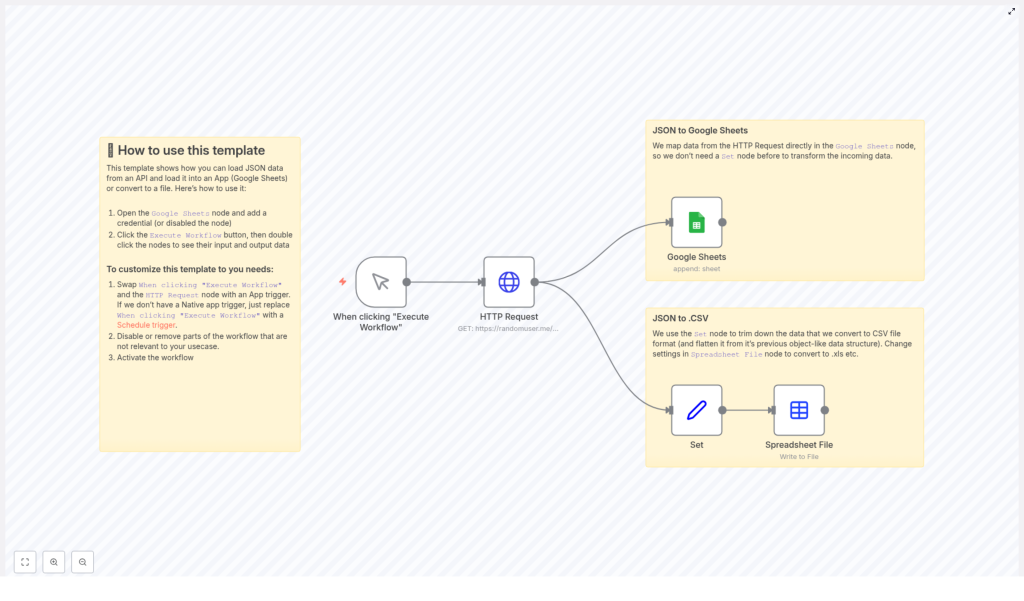Introduction
In today’s data-driven world, automating the process of loading JSON data from APIs into applications like Google Sheets or converting it to CSV files improves efficiency and accuracy. This blog post walks you through a practical workflow template demonstrating how to do this seamlessly using automation.
Overview of Workflow
The workflow begins with a manual trigger, followed by an HTTP request fetching JSON data from a random user API. Then, the data splits into two paths:
- Direct appending of JSON data to Google Sheets.
- Transforming the JSON data with a
Setnode to a flatter structure that converts to a CSV file via theSpreadsheet Filenode.
Step-by-Step Breakdown
1. Manual Trigger
The workflow initiates when the user clicks Execute Workflow. This simulates how you might start the process manually or replace it with an app or schedule trigger for automation.
2. HTTP Request
The HTTP Request node calls the RandomUser API (https://randomuser.me/api/) to fetch fresh random user data in JSON format. This data contains nested objects including personal info like name, email, and location.
3. JSON to Google Sheets
The first branch takes the JSON data directly and maps it into the Google Sheets node. Here, the integration appends the data to a specified Google Sheet without needing prior transformation. This works well if the app supports nested JSON.
4. JSON to CSV Conversion
- Set Node: Extracts and flattens relevant fields from the original JSON, such as full name, country, and email, combining nested properties into simple strings.
- Spreadsheet File Node: Converts the simplified data into a CSV file. You can adjust its settings to convert to other formats like XLS as needed.
Customizing the Template for Your Needs
- Replace the manual trigger with an app trigger or schedule trigger depending on how and when you want to run the data syncing.
- Modify the
HTTP RequestURL to your target API. - Update the
Google SheetsandSetnode mappings to fit your JSON structure and desired output format. - Enable and authorize the Google Sheets node to connect with your account.
- Disable or remove components of the workflow that don’t align with your use case.
Benefits of This Workflow
- Automated Data Integration: Eliminates manual copying and pasting of JSON API data into spreadsheets.
- Flexible Output: Supports direct app updates or exporting to CSV files for sharing and archival.
- Simplicity: The template is easy to customize and extend to other APIs and formats.
Conclusion
Loading API data into Google Sheets or CSV files no longer has to be a tedious manual process. With this workflow template, you can automate the extraction, transformation, and loading of JSON data efficiently. Whether you want real-time syncs or regular exports, this method will save time and reduce errors.
Ready to streamline your data workflows? Set up automation today and unlock faster, more reliable data handling!
Happy automating!

